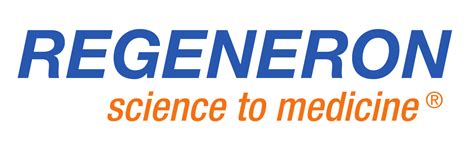What the Regeneron TV commercial - Now Eye See: Diabetic Retinopathy is about.
Regeneron has recently released a new TV spot called 'Now Eye See: Diabetic Retinopathy,' which aims to raise awareness about the serious condition of diabetic retinopathy and how it can be treated. The ad starts with a man looking directly at the camera as he describes the symptoms of diabetic retinopathy, such as blurry vision or difficulty seeing at night.
As the man continues speaking, the ad begins to showcase various individuals who have been affected by diabetic retinopathy. From a young boy to an older woman, the ad highlights the fact that diabetic retinopathy can affect anyone, regardless of age or gender. The Regeneron TV spot effectively conveys the severity of the condition and the impact it can have on daily life.
However, the ad doesn't just focus on the negative effects of diabetic retinopathy. In fact, the latter part of the spot shows how Regeneron's new treatment has helped these individuals regain their vision and improve their quality of life. The ad explains how the treatment, called EYLEA®, can help to reduce swelling and improve vision for individuals suffering from diabetic retinopathy.
Overall, Regeneron's 'Now Eye See: Diabetic Retinopathy' TV spot effectively conveys the importance of recognizing the symptoms of diabetic retinopathy and seeking the appropriate treatment. By showcasing real people who have been impacted by the condition, the ad encourages individuals to take their eye health seriously and seek help if needed.
Regeneron TV commercial - Now Eye See: Diabetic Retinopathy produced for
Regeneron
was first shown on television on February 1, 2022.
Frequently Asked Questions about regeneron tv spot, 'now eye see: diabetic retinopathy'
Diabetic retinopathy is an eye condition that can cause vision loss and blindness in people who have diabetes. It affects blood vessels in the retina (the light-sensitive layer of tissue in the back of your eye). If you have diabetes, it's important to get a comprehensive dilated eye exam at least once a year.
The 4 Stages of Diabetic Retinopathy
- Stage 1: Mild nonproliferative diabetic retinopathy.
- Stage 2: Moderate nonproliferative diabetic retinopathy.
- Stage 3: Severe nonproliferative diabetic retinopathy.
- Stage 4: Proliferative diabetic retinopathy.
Diabetic retinopathy is a complication of diabetes, caused by high blood sugar levels damaging the back of the eye (retina). It can cause blindness if left undiagnosed and untreated. However, it usually takes several years for diabetic retinopathy to reach a stage where it could threaten your sight.
Laser treatment usually works very well to prevent vision loss if it's done before the retina has been severely damaged. It may also help with macular edema. Severe proliferative retinopathy may be treated with a more aggressive laser therapy called scatter (pan-retinal) photocoagulation.
2. Moderate NPDR. The next diabetic retinopathy stage is characterized by damage to some of the blood vessels in the retina, resulting in leakage of blood and fluid into the retina tissue. This fluid can cause a loss of vision.
Stage 1: background retinopathy
This means that tiny bulges (microaneurysms) have appeared in the blood vessels in the back of your eyes (retina), which may leak small amounts of blood. This is very common in people with diabetes.
Proliferative Diabetic Retinopathy (PDR)
In this advanced stage, new blood vessels grow in your retinas and into the gel-like fluid that fills your eyes. This growth is called neovascularization. These vessels are thin and weak. They often bleed.
Stage 3: Severe nonproliferative diabetic retinopathy
A larger section of blood vessels in the retina become blocked, causing a significant decrease in blood flow to this area. At this point, the body receives signals to start growing new blood vessels in the retina.
Over time, too much sugar in your blood can lead to the blockage of the tiny blood vessels that nourish the retina, cutting off its blood supply. As a result, the eye attempts to grow new blood vessels. But these new blood vessels don't develop properly and can leak easily.
STAGE 4: PROLIFERATIVE DIABETIC RETINOPATHY
Peripheral neovascularization is usually treated with laser panretinal photocoagulation (PRP, Figure 4). They also often receive anti-VEGF intravitreal injections that may be performed in conjunction with PRP.
Improved glycemic control has been shown to reduce complications of diabetes, including retinopathy. In most cases of center-involved DME and reduced vision, first-line therapy consists of an intravitreal injection of one of several anti-VEGF agents.
The final stage of Diabetic Retinopathy is Proliferative Diabetic Retinopathy. At this point, the disease has advanced significantly and is very threatening to one's vision. Because of additional damage to the eye's blood vessels, there is worsening circulation inside the eye.













